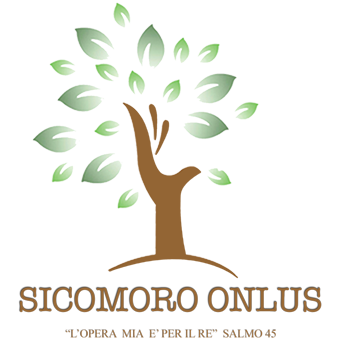CRM Benefits: 7 Ways CRM Improves Customer Relationships
Content
The focus of a business on being customer-centric will translate into an improved CLV. On average, an operational CRM generates over $8 of value for every $1 that you invest in it. Your revenue will grow because you will scale up your sales department and provide it with better sales instruments. You can set up a dashboard for every individual in your company who has login credentials for your CRM platform.
She writes informative, research-based guide blogs for EngageBay about all things CRM. SAP CRM doesn’t have a free plan, though you can try it for free. If you are just starting out on CRM, start with the free plan and then graduate to the paid one that costs $10/month/user. This is where you get the best of all worlds with immense possibilities for automation, customization, and integration. This tool can enable you to look at all the aspects of your customer-related touchpoints and find out any weak areas.
Provides Analytical Insights by Preparing Reports
The first open-source CRM system was developed by SugarCRM in 2004. During this period, CRM was rapidly migrating to the cloud, as a result of which it became accessible to sole entrepreneurs and small teams. This increase in accessibility generated a huge wave of price reduction. Around 2009, developers began considering the options to profit from social media’s momentum and designed tools to help companies become accessible on all users’ favourite networks. Many startups at the time benefited from this trend to provide exclusively social CRM solutions, including Base and Nutshell.
An open-source CRM offers businesses a high level of customization. Instead of being developed and controlled by one company, it consists of a source code published publicly and shared by users and developers all around the world. What makes an open-source CRM beneficial is that anyone with the know-how can “open up” the software themselves and change features, interface elements and virtually anything else as they see fit. Operational CRM helps you store customer information, deals, and leads in a unified repository. It boosts efficiency via service automation, allowing businesses to make the most out of limited resources.
Leads — These are consumers that have filled out a form or otherwise expressed interest in your company. They may be high-quality, prospective customers, but you won’t know until they continue on the customer journey. Reports, especially those with insights driven by artificial intelligence, help CRM users like marketers and sales teams know how to work with leads to convert them to opportunities. For example, companies of all sizes use social media and rely on metrics from those platforms. Google Analytics is an important tool many business owners use, at least minimally, to monitor their website traffic. However, you’ll quickly learn in exporting Excel files that the tools alone don’t provide recommendations.
Effect on customer satisfaction
These data can help the management make powerful business decisions, and help sales teams set more realistic targets. If a sales team has the knowledge of what interests a particular customer most, they or a support representative can meet the customer’s needs and solve problems more proactively. Many CRM platforms offer data analytics tools that enable businesses to unlock insights that are invisible to the naked eye. You can measure just about anything from customer sentiment and whether you’re meeting their expectations, to your sales team’s performance or how well that last marketing campaign did. Sales-force automation identifies new prospects, keeps track of customer interactions, makes sales projections, and manages documentation. Sales reps can specify conditions for workflows to optimize time.
Some CRM systems are equipped with mobile capabilities, making information accessible to remote sales staff. Some CRM software is available as a software as a service , delivered via the internet and accessed via a web browser instead of being installed on a local computer. Businesses using the software do not purchase it, but typically pay a recurring subscription fee to the software vendor.
Keep the same software as your company grows.
An indirect result of this boost in efficiency will be a boost in revenues. For example, since your sales team can make more calls in less time to a more targeted leads list more likely to purchase your product, you will see increased sales in less time. A customer service manager is concerned with how much time, on average, reps are spending with customers, which leads to longer hold times and greater discontent among operational crm definition customers. Analytical CRM analyzes customer data to better understand customers, their needs, and how best to accommodate them. Information gleaned via analytical CRM activities allows you to better target your efforts in the areas of sales and customer service. An operational CRM generates all this data and more, so your customer service team can have a comprehensive view of your company’s customer experience.
You’ll find platforms that blend different components of each kind of CRM offering a mash-up of features. Using a CRM lets you keep customer info in one place, making it accessible to everyone in your company. If a customer service rep needs to know more about someone’s case, they can quickly pull up information about every single interaction they’ve had with the company. This lets them serve the customer’s needs quickly and with less back-and-forth. Zoho CRM is among the largest selling product in the software market.
Moreover, CRM generates real-time data that various departments can use to decide the next action. For example, marketing departments can monitor and assess the efficacy of campaigns in real-time, ultimately deciding https://xcritical.com/ whether or not to continue with the campaign. Not only does CRM help banks eliminate loopholes, but it also helps them discover which strategies are performing well and should be continued and which do not.
Ability to cross-sell
Operational CRM concentrates on simplifying customer interactions by blending sales, marketing, and service processes. Sales reports provide detailed views of who your best customers are, where your leads come from, sales pipeline pain points, customer motivation for purchasing from you, and more. Once upon a time, customer information might have been sloppily kept on Excel spreadsheets. The best CRMs gather and unify all customer data in one place for everyone in your organization to access. This is crucial for delivering top customer support, where each agent can have an immediate understanding of each contact’s needs and problems to help them as expediently as possible. Analyze your internal needs and compare that to your existing customer interactions.
- While operational CRM tools can support these communicational systems, this type of CRM software focuses more on driving client interactions.
- A centralized database unifies information across departments and teams, allowing you unlimited access to lead and contact information, purchase histories, inventory, sales, and marketing information.
- You can create dashboards to organize customers based on different characteristics or demographics or automate lead qualification.
- Another related development is vendor relationship management , which provide tools and services that allow customers to manage their individual relationship with vendors.
- But, a CRM comes with powerful analytics features to get deep insights into the effects of your sales activities.
When a client has a simple question, waiting on an answer from a customer service rep can be frustrating. There’s no reason a customer who has a simple inquiry should have to wait in line behind a customer with a seriously complicated problem. If you wanted every email sent by your company to be manually written and delivered, you’d need an army of people sitting behind computers.
A complete out of sync when communicating with the client
But what makes the real trick here is that CRM can also prompt you to reach out to those customers who have not been contacted in a while, and perhaps feel neglected. In a nutshell, a good CRM system helps you know better who is really interested in what you have to offer, who is still being on the fence, and who’s cold as ice. “The contact center and CRM collision leads to a new dominant species”. Strategic CRM concentrates upon the development of a customer-centric business culture.
Helps in tapping on More Opportunities
In that case, you probably can not imagine running your business without it. So for those of you who are reading this article today and have an up and running business but without a CRM in place, it is high time you change your perspective and take the benefits of CRM. Automation of processes helps implement best practices and cut down costs while driving revenue. CRM implementation sometimes fails because the people using them have not fully adopted the platform. They may be used to older apps, or be too busy to learn the new one.
A customer data platform is a computer system used by marketing departments that assembles data about individual people from various sources into one database, with which other software systems can interact. As of February 2017 there were about twenty companies selling such systems and revenue for them was around US$300 million. CRM systems compile data from a range of different communication channels, including a company’s website, telephone, email, live chat, marketing materials and more recently, social media.
In addition to enhancing retention rates and providing better insights into campaigns, CRM in banking also plays a crucial role in productivity. Suppose you discover that a customer is dissatisfied with your service or has difficulty executing banking operations. In that case, you can approach them, remedy their issue, and retain that customer from leaving the bank. Overall, the use of CRM in banking can boost customer retention rates.
No matter your needs, there’s a CRM solution out there to support your business operations. Nextiva’s Sales Pipeline CRM is the right fit for business owners who are looking for the benefits of a custom-built system without the burden of a huge IT and staffing commitment. Likewise, if you manage service tickets, Nextiva’s Service CRM is for you. Instead of cleaning up the data, cursing at your screen while creating a VLOOKUP function in Excel, you could just know what your customers feel by accessing their records or pulling a quick report. After every interaction, or on a semi-annual basis, you should survey your customers.
This is because you don’t have enough data about these leads to know which one is of higher value. As a result, sales people spend their precious time calling every lead that comes their way. But leads that actually can provide business are sometimes missed out. Chances are that they have already bought your competitor’s products or have lost interest in making a purchase.
Team members will be able to access individual case files in real-time, reducing the need for face-to-face meetings. Mistakes and redundancies are stamped out, so service costs fall too. A CRM solution helps streamline the sales process so that each customer gets what they want, how they want it, and in the most timely fashion. From lead generation to pipeline conversion, the right CRM matches each customer up with the best agent to meet their needs. With a CRM system, marketing campaigns can target your potential customers with only relevant information for them. This can be based on their previous search or purchase histories or demographics.

